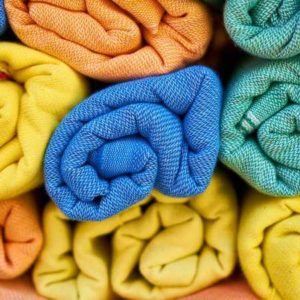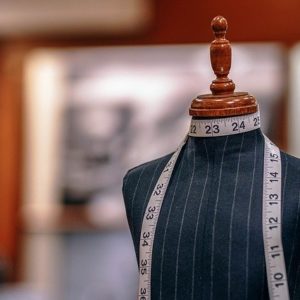Sewing thread plays a very important part in apparel manufacturing. You have to calculate sewing thread consumption for costing as well as for the procurement of thread before starting the apparel production. It is really important to calculate correct thread requirement to avoid any excess/shortage during the order execution.
There are two common methods for calculating the thread consumption.
- Actual Thread Consumption
- Thread Consumption Ratio
Measuring actual thread consumed
In this method you need to measure the seam length and then the thread to be pulled out of this length. You can use the amount pulled out of this specified length to calculate the ratio of thread consumed in the entire seam.
Dividing the amount of thread by the seam length, you get the ratio of thread consumed. Multiply this factor times the total length of seam, you will get the total thread consumed for that seam.
The below example shows the total thread consumed for one type of stitch in a garment (stitch class 401 = 2-Thread Chain stitch) . By following the similar procedure, you can calculate the thread consumed for different stitching operations in a garment.
Example:
- Length of seam = 100 cm (1 metre)
- Stitch class 401 = 2-Thread Chain stitch
- Length of seam for which thread is removed = 15 cm
- Needle thread removed = 19.5 cm
- Needle thread factor = (Needle thread length/Length of seam for which thread is removed)
- 19.5/15 = 1.3
- Looper thread removed = 62.0 cm
- Looper thread factor = (Looper Thread Removed /Length of seam for which thread is removed)
- 62.0/15 = 4.1
- Total Needle thread = 100 cm x 1.3 = 130 cm
- Total Looper thread = 100 cm x 4.1 = 410 cm
- Total thread consumed = 130 + 410 = 540 cm
- Add 15% wastage* = 540 cm x 1.15 = 621 cm
*Generally, 10% to 15% wastage of thread is added to the consumption . This wastage occurs due to shop-floor conditions like machine running, thread breakage, repairs, etc.
Thread Consumption Ratio
Thread consumption is the easier method to use . Thread Consumption Ratios for some of commonly used stitch types are listed in the table below. By multiplying the thread ratios to the length of seams, total thread consumption can be calculated.
| Stitch Class | Description | Thread Ratio | No. of Needles | Needle Thread % | Looper Thread% |
| 101 | Chainstitch | 4 | 1 | 100 | 0 |
| 103 | Single-thread blind stitch | 4.5 | 1 | 100 | 0 |
| 301 | Lockstitch | 2.5 | 1 | 50 | 50 |
| 304 | Zigzag Lockstitch | 7 | 1 | 50 | 50 |
| 401 | Two Thread Chain Stitch | 5.5 | 1 | 25 | 75 |
| 406 | Three Thread Covering Stitch | 18 | 2 | 30 | 70 |
| 503 | Two Thread Overedge Stitch | 12 | 1 | 55 | 45 |
| 504 | Three Thread Overedge Stitch | 14 | 1 | 20 | 80 |
| 512 | Four Thread Mock Safety Stitch | 18 | 2 | 25 | 75 |
| 516 | Five Thread Safety Stitch | 20 | 2 | 20 | 80 |
| 602 | Four Thread Covering Stitch | 25 | 2 | 20 | 80 |
| 605 | Five Thread Covering Stitch | 28 | 3 | 30 | 70 |
- Thread Ratio= Total Thread Usage per cm of seam
- The above ratios are calculated with SPI 18 (stitches per inch).
- These ratios can marginally vary with the factors affecting thread consumption.
- You need to add certain percentage of wastage to the above ratios as per shop floor conditions. It may vary from 10% to 15%.
A&E has developed product specific average thread consumption sheet “ANECALC” which is free to use. It is an product specific Excel-based thread calculation sheet. You can download those consumption sheets and modify values as per your requirement. You can download it from here download link .
Apart of that you can also use Coats Seamworks 3™ . Using this software, you can calculate thread consumption and cost. it calculate the consumption for a single product and also enables you to choose the right thread ordering pattern, for the smooth and efficient order execution.








Thanks for sharing, Great content
Meed to know sewing thread Consumption